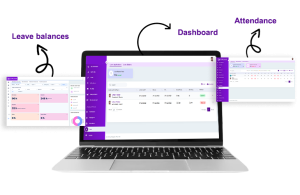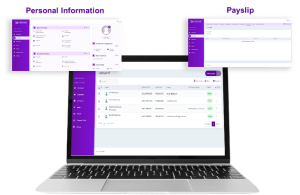In today’s fast-paced business world, streamlining HR operations and enhancing employee experience is crucial.
One effective way to achieve this is through the implementation of an Employee Self Service Module, an essential component of modern HRMS (Human Resource Management System).
This portal empowers employees, increases efficiency, and reduces the burden on HR personnel.
Empowering Employees with Information
The Employee Self-Service Module revolutionizes the way employees interact with HR functions. It empowers them to access and manage their personal information, benefits, and work-related tasks directly.
Here’s how it benefits both employees and HR departments:
- Efficient Leave Management: Employees can request leave through the portal and track their leave balances in real-time. This process is hassle-free and reduces the administrative burden on HR staff.
- Attendance Tracking: The portal also provides attendance tracking, enabling employees to view their attendance records and check in or out using geofencing. This ensures accurate records and can be integrated with payroll.
- Access to Payslips: Employees can easily access their payslips, tax information, and other payroll-related documents through the portal. This feature provides transparency and minimizes payroll-related queries.
- Performance Reviews: The Employee Self-Service Module can facilitate performance management processes. Employees can set performance goals, review progress, and participate in self-assessments, contributing to a more collaborative review process.
- Learning and Development: Some portals include tools for employees to access training materials, courses, and certification programs. This encourages ongoing learning and development.
- Communication Hub: Beyond HR functions, the portal serves as a communication hub. Employees can stay informed about company news, policies, and announcements through the portal.
- Personalized Experience: The portal offers a personalized experience by tailoring content to individual employees’ roles and needs. This makes information more relevant and accessible.
Conclusion
The Employee Self Service Module redefines the employee experience by granting employees control and access to vital HR functions. It enhances efficiency, reduces errors, and empowers HR departments to focus on strategic tasks.
Moreover, it fosters a culture of transparency, communication, and continuous learning. As businesses evolve, investing in an Employee Self Service Portal is not merely an option but a necessity.
It aligns HR operations with the digital age and elevates employee satisfaction and productivity. The implementation of an Employee Self-Service Module can, thus, be a game-changer for your organization.
It’s time to embrace the future of HR management and unlock the full potential of your workforce. Your journey towards a more efficient, empowered, and informed workforce begins with ConfluxHR.





